Many people who carry a healthy lifestyle have health disorders due to the presence of parasites.Highlight the body (proper nutrition, exercise, hardening procedures) without eliminating the body from parasites does not provide a pronounced positive effect.According to the World Health Organization, helminths are located not only in the gastrointestinal tract, but also in vital organs: brain, heart, lungs, liver, kidneys.Helminths in the processes of your life distinguish special substances - toxins that are strong poisons and allergens.It is the simplest, fungi and helminths that are the trigger mechanism for many chronic diseases: cholecystitis, cholelithiasis, pancreatitis, colitis, diabetes mellitus, bronchial asthma, atopic dermatitis.
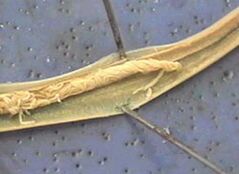
Chronic fatigue, irritability and anxiety, hyperactivity in children, anemia, brittle nails and hair, problematic skin, headaches, appetite disorders, reduction of immunity - these may be the signs of current disease.With a long stay of parasites in the human body, the immune system suffers a lot.In the process of constant struggle with foreign antibodies, this is exhausted, that is, the development of secondary immunodeficiency.Parasite disease leads to hypovitaminosis, depletion of microelements: potassium, copper, manganese, selenium, zinc, magnesium, silicon;The violation of hematopoiesis, hormonal insufficiency, vascular permeability is violated, protection against body cancer suffers.
For millennia, people, mainly plant food, received natural antimicrobial, antiparasitic and antiviral active substances.A decrease in the consumption of wild plants, fruits, fruits, replacement of their vegetables and fruits, heat and industrial treatment led to a decrease in the consumption of volatiles and natural antibiotics.As a result, a person has become an easy prey for many microorganisms.The intensive development of the pharmaceutical industry that produces antibiotics has led to a decrease in immunity.
Parasitic determination
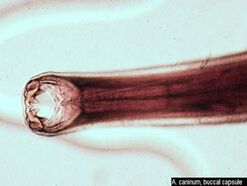
Parasites (from Greek. Parasites - an overlap, a parasite) - lower organisms of plants and animals that live outside or inside another organism (owner) and eat at their expense.Parasites arose in the process of historical development of freely living organisms.Its adaptation to certain living conditions implied the simplification of its organization, the development of special fixing organs, the increase in the development of the genitals, breathing, which makes it possible to exist in an impassive environment.Parasites include many helminths, fungi, viruses, protozoa, worms, crustaceans, spider -shaped, insects.Parasite owners can be bacteria, simpler, plants, animals and humans.Parasites undergo a complex development cycle: sometimes they need a change of 2-3 owners whose body is intermediate (helminths pass in larval stages) or final (helminths become mature, invasive).Parasites cause weakening and exhaustion of the host's body, cause various diseases.
Helminants can parasitize in all a person's tissues and organs, but the most common place of their location is the food dealt.The tapeworm of bulls and pork, a broad ribbon is fixed on the upper small intestine, also parasitizes Ascaris.The dwarf tabbell is mainly located in the lower third of the small intestine, the vlaSovs - in the large intestine, opistorchis - in the biliary passages of the liver and in the pancreas ducts, the pilotic - in the lower parts of the fine and in all parts of the large intestine.Thus, the distribution of different types of helminths along the digestive tract in search of the most favorable living conditions provides them with individual survival and creates the conditions for the development of various types in a person's body.
Classification
By distribution:
- Ubiqueta - Find everywhere.
- Tropical - Distributed in Tropical Climate Zones.
According to biological and epidemiological characteristics: GehelMinths - a disease in which helminths first develop in the human body and then on a non -viva substrate, more often in the soil.Biohelminths is a disease in which a biological cycle of helminth development is necessarily in the body of other living beings except for one person.Distinguish between the end owners, in the body of which the helminths develop for the sexually mature stage, as well as the intermediaries, where the parasite is at the larva stage or their reproduction is not sexually.One person is more often the final host with less frequency - intermediate.Connection helminthiasis is a disease in which parasites are distinguished from the human body with mature or almost mature, as a result of which other person's infection is possible or self -infection.
Depending on the location of the parasite in the body: educational - living in the intestinal cavity and other cavities of a person (eg ascarides, tape) and fabric - living in the tissues.

At the place of staying in the owner:
- External (mosquitoes, blinds, leeches, lice).
- Internal (helminthiasis):
- Round Worms (nematodes - ascarides, vlasov, pinworms, strungyloids);
- Plans worms:
- Trematodes (Pires - Cat bickelter, schistosomes);
- Cestodes (Ribbon Worms - Taurus and Pig Meat, dwarf tabbell, wide ribbon, echinoccus).
- Bacteriosis (Staphylococcus, Streptococcus).
- Protose (Amebas, Lamblia, Trichomonas, usually the owners of the chlamydia and AIDS virus).
- Mycoses (fungal diseases) -for example, Candida.
How parasites adapt
- A long life expectancy (helminths live in the body for years and sometimes as much as the owner of the parasite lives);
- The ability to suppress or modify the immune response of the host body (an immunodeficiency state arises, conditions for the penetration of pathogenic agents outside the outside, as well as to revive the internal outbreaks of infection);
- Many types of helminths, entering the digestive tract, distinguish anti -enzymes, which saves them from death;The digestion process is disturbed, the toxic-allergic reactions that are different in gravity appear: hives, bronchial asthma, atopic dermatitis;
- Development stage (egg, larva, owners change);
- Egg capacity for years persists in the external environment;
- The sexual reproduction in which genetic information is changing, and this is the highest stage of development, leading to an increase in the heterogeneous population, ie parasites become less vulnerable;
- The absence of immunoprophylax methods, since the immune response is weak and unstable;
- Disseminated helminth, many habitats (water, soil, air, plants and animals).
How parasites enter the body
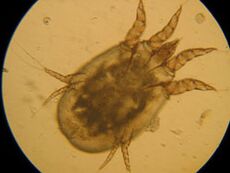
You can be infected not only through dirty hands.Animal hair is a worm (ascarized), Lamblia.Wall eggs that have fallen from wool remain viability for up to 6 months and powder, toys, rugs, underwear and bedding and hands fall into the food dealing.The dog through wet breath disperses the eggs at a distance of 5 meters (cat - up to 3 meters).Dog fleas also tolerate worm eggs.Askarid eggs enter the body through poorly washed vegetables, fruits, fruits, vegetables, dirty hands and are also scattered to flies.And incorrectly boiled barbecue or home -made lard is the path of trichnelosis infection;Poor salted fish, caviar - opistochiasis and broad ribbon.
So there are several ways to enter the body:
- food (through infected foods, water, dirty hands);
- Contact the property (through household items, infected family members, pets);
- through blood struggle insects;
- Active (where the larva penetrates the skin or mucous membranes during contact with infected soil when bathing in open reservoirs).
Prevention
Here are some rules that need to be followed to prevent parasites penetration in the body:
- It is not recommended to drink water from natural sources and in an unknown area.
- You cannot eat uninsy vegetables and fruits.
- It is advisable to be careful with mosquitoes, ticks and other insects that can be transported from blood that can be carried to parasites.It is necessary to use special means of protection against them and in places where there are many of them, wear pants and shirts with a long sleeve.
- Before a trip to some countries, it is necessary to vaccinate with typhoid, plague, tropical fever and other infectious diseases.Going to the places where the malaria mosquito is found, you need to take anti -male tablets.Gathering on a long trip, where ticks can be, it is important to vaccinate tick encephalitis.
- Do not allow children to embrace and kiss dogs, cats and other pets. Take care of the health of pets - take the deworming courses.
- Follow the rules of personal hygiene, keep cleaning the house.
- Perform periodic preventive antiparasitic courses for the whole family.
Children and Parasitic Invasions
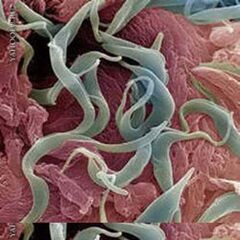
The most vulnerable to the effects of parasites are children.They are infected with various types of parasites through dirty hands, sand, soil and water.Sometimes the child's infection can occur in intrauterine, since the simplest larvae, bacteria, viruses, candidate and helminth can penetrate the fetus through the placenta with blood flow, as well as during birth through the birth canal.Due to the expansion of their motor activity, at 1.5 to 3 years old, children can be infected at home, on a walk, in the kindergarten when contacting polluted objects (street shoes, floor, toys, ordinary areas), on the street (playing in the sandbox or on the floor), as well as in contacts with animals (conisters or homemade homemakers).The high probability of parasitic invasions is observed with non -compliance with hygiene rules (uninsy hands, eating uninsy vegetables and fruits, eating raw water of natural lagoons and swimming in them).Only worm eggs and dwarf tapeworm are transmitted directly from person to person.Eggs of other ripening helminths must necessarily enter the body of an intermediate host or in a suitable environment - soil or water.At 1.5 to 3 years old, the infection scale of children with helminths can reach 80%.
More than 90% of all helminth diseases in children are caused by intestinal nematodes that parasitize the intestines (Ascaris, Pinworms), nematodes parasitizing in the intestinal wall or other organs (ankilostoma, non -cycinel, and UC intestinal).In children, subject to elementary hygiene (meat or fish printing or fish and non -washed fish, uninsy vegetables, water not harvested from natural reservoirs), there are virtually no candy (trematods) and tape helminths (cestodes).
How can a child be infected?
The infection is performed when egg larvae enter the body.Eggs enter the environment with feces of infected people and animals.They have microscopic dimensions, are very resistant to various influences and can maintain vitality for a long time outside the body (on the ground, on the surface of objects or products, on the linen folds, the skin).Once in the oral cavity of the child, worms eggs pass, partially destroying, through the acid environment, the aggressive environment of the stomach and activated in the intestine, where the conditions for the development of adults from eggs are more favorable.Pre -school and pre -school children are especially susceptible to helm tentn invasions as they still have imperfect barriers of the gastrointestinal tract.
Measures for preventing helminthiasis in children: to all family members to comply with hygiene rules, try to avoid close contact with the child and his personal belongings with pets;In the street, it is important to ensure that the child does not select various objects;prevent contact with animals;It is important to instill the child's personal hygiene skills (wash hands with soap after the street and visit the bathroom);It is advisable to periodically perform wet cleaning at home, wash with soap toys, especially in the presence of pets, as well as toys brought from walking home;Upholstery, upholstered furniture and upholstered toys;Do not give the child vegetables and fruits not washed, not not processed sufficiently, meat and fish, raw water of natural reservoirs.
Signs of helmintic invasion in children
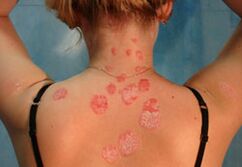
Most of the time, a child has to guess the helm tentn invasion by indirect signs.The probability of helminthin invasion is very high iF the child has hs such symptoms Such as: salivation, nausea, decreed appetitis or pathological inchesed, czenging pains around the navel or withtoin location, appearing regardless of food intake, Stool Disorder Stool disorder(Diarrhea, Constipation), Frequent Tidimony or Detaziness, Pallor and Pallor, Pallor and Pale Sineva Under the Eyes, Increaded Excitability of the Child at night, whims without cause, poor falling and bad nights, accompanying screaming, wake up, stirring, ”crushing teeth, itching in the perineum.Often parasites lead to the allergization of the body, skin reactions appear in the form of atopic dermatitis (as a rule, it is stubborn, which is difficult for symptomatic therapy).If worms are found in a child or family members, it is necessary to treat the whole family to prevent the formation of the focus of the infection.In this situation, it is important to strengthen hygienic measures, in particular, boil and iron on both sides and personal underwear.
























